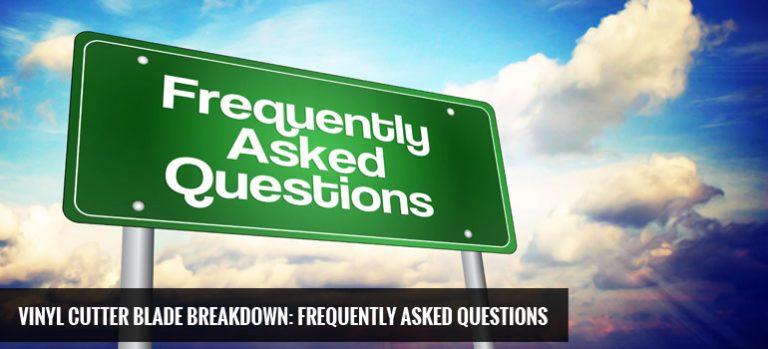At Signworld, we pride ourselves on the quality of our vinyl sign production, and that means knowing our way around cutter blades. In today’s post, we share answers to some of the most frequently asked questions we receive from new franchisees and fellow sign business owners.
Do Vinyl Cutter Blade Brand Names Matter?
There are a lot of products on the market where brand names are irrelevant, but vinyl cutter blades are not one of them. Most blades are purpose-built for specific tool carriages, and this lack of interchangeability means sign shop owners should be very careful when making these purchases. When in doubt, buy blades whose brand name matches the cutter.
That said, exceptions to this rule are starting to emerge. New manufacturers realized they could sell more product with universal blades, and the established industry leaders were forced to follow suit to stay competitive. So if you are looking to overhaul your equipment setup entirely rather than simply replacing a blade, you will have the option of investing in interchangeability.
Do Certain Blades Work Better With Certain Vinyl?
In short, yes! The angle of the blade will dramatically impact the final product.
Plotter blade angles are usually set at 30, 45, or 60 degrees. 30-degree blades are ideal for standard sized graphics on thin cast vinyl, while 45-degree blades are suited for most calendared PVC vinyl. Since it cuts so deeply, 60-degree settings are typically reserved for thick or tough film like flock and sand-blast stencil.
While these three settings are standard, none are suited for work with tiny graphics. If you’re trying to plot finely detailed fonts or images – anything smaller than half an inch – then you risk lifting the edges of your design with the rotation of larger blades. For precision work, 25-degree blades are recommended.
Installation Tip: How Much Of The Blade Should Be Exposed?
If you’re installing a new plotter blade, you need to be sure that you’re exposing the right amount of blade. Failure to do so will result in subpar signage and costly material replacements.
It’s very common for new sign shop owners to leave too much exposed, which can deeply score the release liner. As a general rule, any time you can see and feel the tip of the blade sticking out probably means you’re exposing too much. When your installation is finished, you should barely be able to see the blade.
Make a manual practice cut to quickly gauge whether you’ve done it right or wrong. Drag the blade holder across a sheet of vinyl, drawing a few lines or simple pattern. When you flip the vinyl over, the liner should show no trace of the cut line. If you can see or feel the cut line, it’s time to tuck that blade back further.
Maintenance Tip: When Does My Blade Need To Be Replaced?
If your blade is past its prime, you will start to have some trouble weeding your vinyl. Alternately, you might start to notice your cut quality dropping off. If an inspection of the blade reveals any chips or nicks along the cutting edge, consider it time for a replacement. Though there is no standard lifespan for plotter blades, you will extend the life of your equipment by avoiding deep cuts, committing to regular cleanings, and practicing your precision.
Learn more at http://www.signworld.org!




